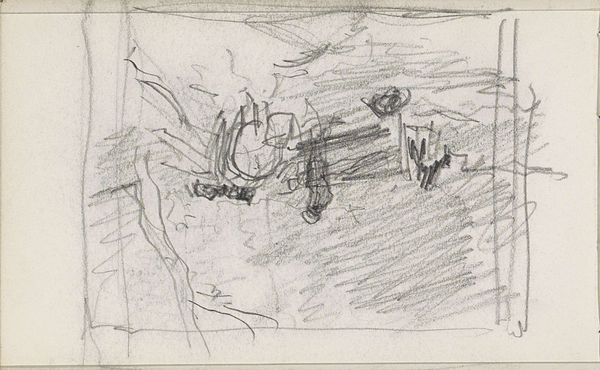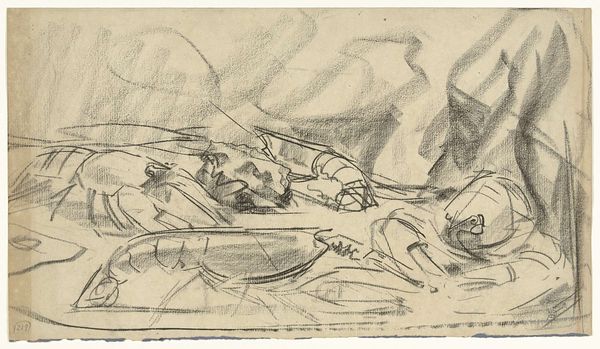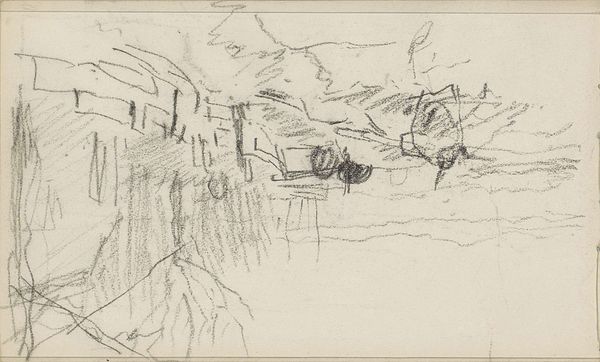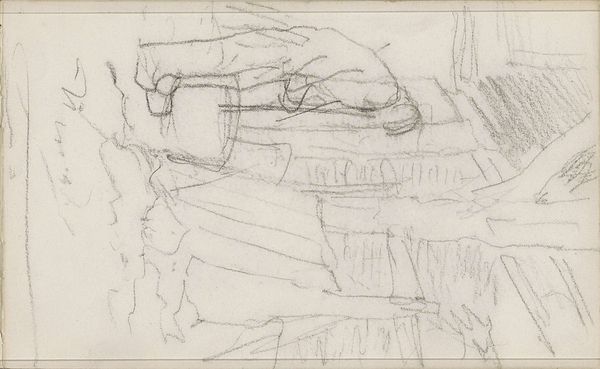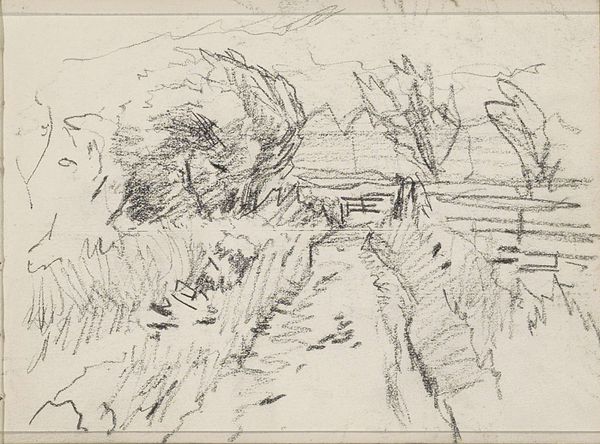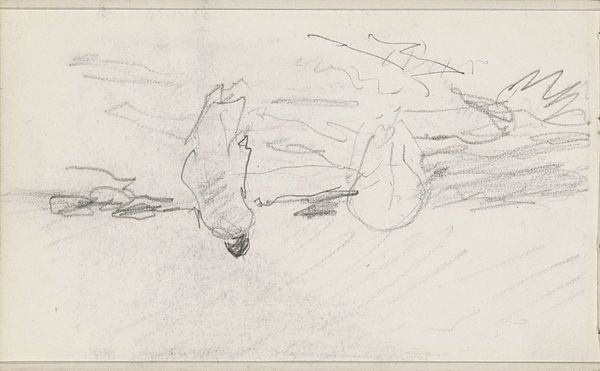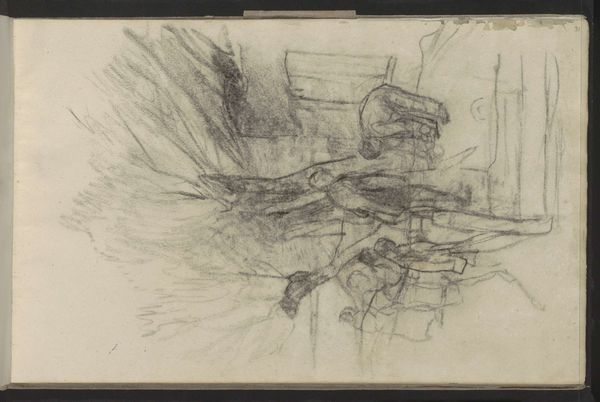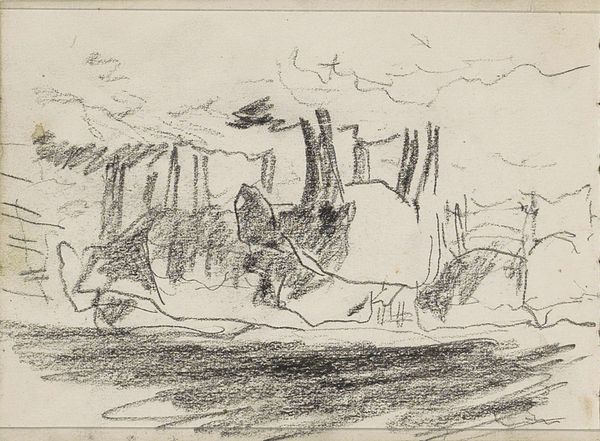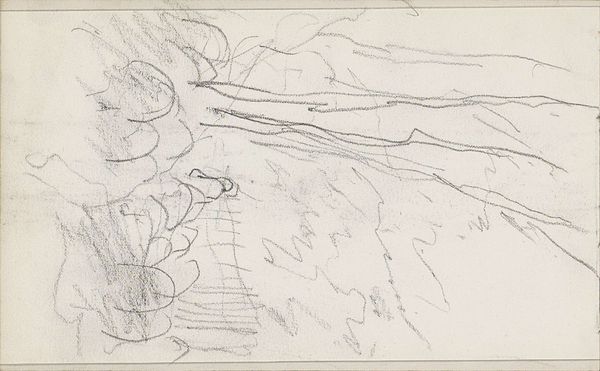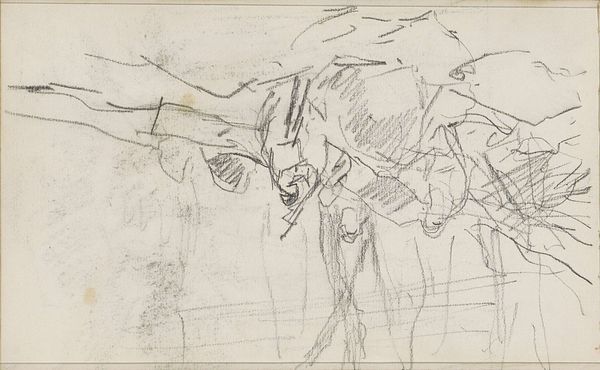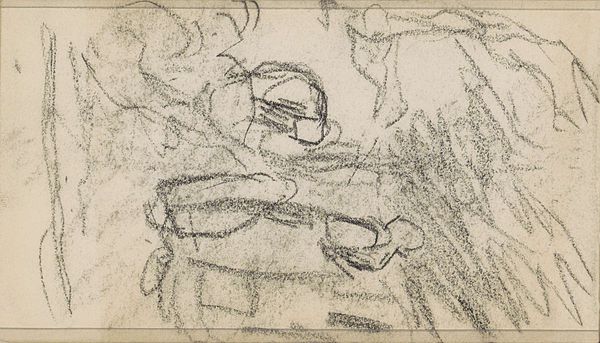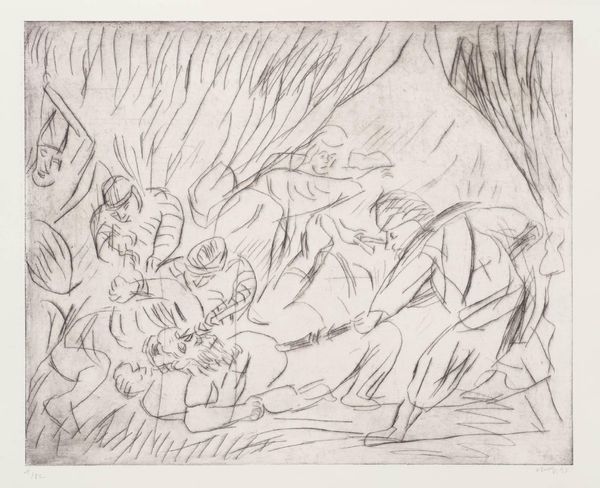
drawing, pencil
#
drawing
#
pen sketch
#
figuration
#
sketchwork
#
romanticism
#
pencil
#
sketchbook drawing
#
history-painting
Copyright: Public Domain: Artvee
Curator: What strikes you first about this pencil sketch, "The Temptation of Christ," dating back to 1796, by George Romney? Editor: The dynamism. Despite its preliminary nature, there’s a remarkable energy and compositional flow— almost dizzying with the vortex of figures. Curator: Absolutely. And I think looking at it from the perspective of materials and production illuminates Romney’s creative process. This wasn’t a finished work, but likely part of a series of explorations towards a larger history painting. What does the unfinished quality mean for the Romantic Movement’s views of labour? Editor: For me, it's about how the lines and shapes coalesce—or rather, struggle to coalesce—into legible forms. Notice how certain figures are more defined, anchoring the scene. There’s a tension created by what is and isn’t fully revealed. It engages ideas of form that recall late 18th century British philosophical discourse regarding "the Sublime." Curator: It speaks volumes, I think, about artistic labor and its commercial context at the time. A piece like this offered Romney a degree of freedom of exploration outside the formal strictures of commissioned history paintings; it also served as the means towards achieving that product. Was his "genius" born only from the act, or also the end product? Editor: Interesting, because by framing this study, we're actively shifting its consumption. We take what was once intermediary labor and declare its independent aesthetic value. We can think about this visual language of sketching itself as something with communicative potential, especially regarding line and visual suggestion, and its evocation of spiritual ecstasy. Curator: Well, seeing it as a commodity shows how the sketch embodies both function and potential for artistic genius as a cultural signifier. What’s genius but the product of creative activity? Editor: Perhaps. The play of light and shadow becomes really powerful when we read this work formally. But framing the discussion only by those production factors potentially ignores the impact these raw lines create through visual design and depth. The light and shading feel transcendent. Curator: Point taken, but considering the social role this sketch plays, both then and now, adds dimensions beyond visual pleasure, I’d argue. Editor: Agreed. Both approaches help deepen the understanding of Romney’s practice. Curator: Indeed. It prompts reflection on production, artistic intention, and even how we assign value to both finished and unfinished art. Editor: Precisely, understanding the formal choices opens dialogues around process.
Comments
No comments
Be the first to comment and join the conversation on the ultimate creative platform.
